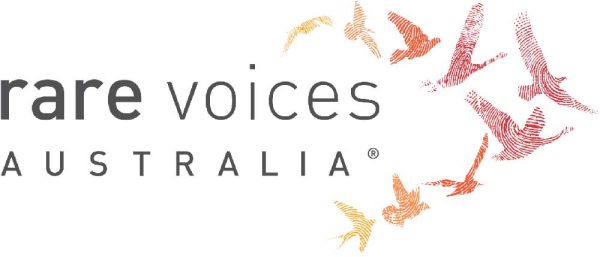HHV-8 associated multicentric Castleman disease (HHV-8+MCD)
Quick Search
- Summary
- Synonyms and Classifications
- Symptoms
- Disability Impacts
- Cause and Inheritance
- Diagnosis
- Treatment
- Clinical Care Team
- Clinical Care Guidelines
- Emergency Management
- Research
- Rare Disease Organisation(s)
- Lived Experience
- Support Services and Resources
- Mental Health
- Other Information
- Useful Links for Healthcare Professionals
Summary
HHV-8-associated multicentric Castleman disease (HHV-8+MCD) is a type of Castleman disease where multiple lymph nodes throughout the body become enlarged and overactive due to a Human herpesvirus 8 (HHV-8; also known as Kaposi’s sarcoma-associated herpesvirus/KSHV) infection.1-3 Lymph nodes are part of the immune system and are the home base of immune cells. There are hundreds of lymph nodes in the human body. In HHV-8+MCD, there is an overproduction of immune cells as well as signalling proteins (cytokines). These immune cells and proteins cause inflammation and damage the body. The signs of HHV-8+MCD can have a slow and subtle onset or be sudden and life threatening.
Below are other types of Castleman disease that are not caused by Human herpesvirus 8 (HHV-8) infection.2,4,5 The different types of Castleman disease have overlapping symptoms but different complications, causes, and treatment methods.
- Unicentric Castleman disease – affects only one or a cluster of lymph nodes
- Idiopathic multicentric Castleman disease – affects multiple lymph nodes similar to HHV-8+MCD, but the cause is unknown
- POEMS-associated multicentric Castleman disease (POEMS-MCD) – associated with part of POEMS syndrome
Synonyms and Classifications
Synonyms: Human herpesvirus-8-associated multicentric Castleman disease, Castleman disease, CD, multicentric Castleman disease, MCD, angiofollicular lymph node hyperplasia, angiomatous lymphoid, angiofollicular ganglionic hyperplasia, Castleman tumour, giant benign lymphoma, giant lymph node hyperplasia, hamartoma of the lymphatics.1,3
Universal rare disease classifications provide a common language for recording, reporting and monitoring diseases. Please visit the Rare Disease Classifications page for more information about these internationally recognised classifications.
ORPHA:570438 HHV-8-associated multicentric Castleman disease
ICD-11: 4B2Y Other specified disorders involving the immune system
Symptoms
Symptoms of HHV-8+MCD may have a slow and subtle onset or may begin suddenly and require urgent emergency care. The most common symptoms include:1-4
- enlarged lymph nodes/lumps under the skin in more than one place
- flu-like symptoms which may include aches, pains, tiredness, night sweats, weight loss, appetite loss, or nausea
- spotted red or purple skin rash (cherry hemangioma or violaceous papules)
- swelling or enlargement of any part of the abdomen or organs (oedema/ascites)
- tingling or numbness in the hands or feet (peripheral neuropathy)
- difficulty breathing
HHV-8+MCD can progress to multi-system organ failure with symptoms that vary depending on the specific organs impacted. Individuals with HHV-8+MCD also have an increased risk of developing lymphoma (cancer of the lymph nodes) and Kaposi sarcoma (cancer in the skin, mouth, stomach, intestines or anus).4,6
Please speak to your medical team to learn more about the symptoms and complications of Castleman disease.
Disability Impacts
Rare diseases are often serious and progressive, exhibiting a high degree of symptom complexity, leading to significant disability. Majority of the estimated two million Australians living with a rare disease meet the Australian Government’s definition for disability (in accordance to the Australian Public Service Commission and Australian Bureau of Statistics), and many experience severe and permanent disability impacts. If you or someone you care for is experiencing disability-related impacts from a rare condition, please speak with a health or disability professional for advice. Information about relevant disability support can be found at the RARE Portal’s Disability Support Information page.
Cause and Inheritance
HHV-8+MCD is caused by Kaposi’s sarcoma-associated herpesvirus (KSHV) also known as Human herpesvirus 8 (HHV-8) infection.1,4,5 The HHV-8 virus reproduces itself in lymph nodes and causes an over-production of immune proteins (such as CD20 and interleukin-6) and immune cells. HHV-8+MCD usually occurs in individuals that are immunosuppressed, such as individuals with human immunodeficiency virus (HIV) or another immune deficiency, as their immune systems are unable to control the HHV-8 virus; however, not all immunosuppressed individuals with HHV-8 will develop Castleman disease.
Diagnosis
Diagnosis of HHV-8+MCD may be made based on the results of an excisional lymph node biopsy and blood and urine tests.5
An excisional lymph node biopsy involves the removal of the entire lymph node (either whilst awake under local anaesthetic or asleep using general aesthetic). The lymph node is then examined under a microscope to look for the characteristic changes that are associated with Castleman disease. A computerised tomography (CT) or positron emission tomography–computed tomography (PET-CT) scan is often performed to look for the presence of other affected lymph nodes in order to differentiate between multicentric Castleman disease (multiple affected lymph nodes) and unicentric Castleman disease (UCD) (only one or one cluster of affected lymph node).5,6
Blood and urine tests may be performed to look for other signs of HHV-8+MCD such as:1,6
- presence of Kaposi’s sarcoma-associated herpesvirus (KSHV)/Human herpesvirus 8 (HHV-8)
- anaemia (low amount of red blood cells)
- high inflammatory markers in blood (such as CRP and/or ESR)
- protein and blood cells in urine which can indicate kidney disease
- high number of platelets (clotting agent in blood)
- high globulins and low albumin levels in blood
- high levels of plasma cells in bone marrow and lymph nodes
A differential diagnosis can rule out other conditions with similar symptoms, such as unicentric Castleman disease, idiopathic multicentric Castleman disease, POEMS-associated multicentric Castleman disease, Hodgkin lymphoma, non-Hodgkin lymphoma, systemic lupus erythematous, rheumatoid arthritis and other autoimmune diseases, and acute viral infections including Epstein–Barr virus.2, 4-6
Please speak to your medical team to learn more about the available diagnostic pathways for HHV-8+MCD.
Treatment
There is currently no curative treatment for HHV-8+MCD. Treatment is targeted at managing symptoms (symptomatic management) and involves a multidisciplinary care team. This may include biological medications that control the number of lymphocytes (a type of immune/blood cell) in the body.5,6 In some cases, antiviral medications and/or chemotherapy may also be used. Other types of medications may also be used to treat associated complications on a case-by-case basis. Individuals with HIV do not have to stop their HIV treatments in order to treat their HHV-8+MCD.
Please speak to your medical team to learn more about the possible treatment or management options for your condition. Treatment will depend on an individual’s specific condition and symptoms. It is also important to stay connected to your medical team so that you can be made aware of any upcoming clinical trial opportunities.
Clinical Care Team
Clinical care for rare diseases often involves a multidisciplinary team of medical, care and support professionals. Please note that the information provided here is as a guide and that RVA does not necessarily monitor or endorse specific clinics or health experts.
Healthcare professionals involved in the treatment of HHV-8+MCD may include general practitioners (GP), paediatricians, haematologists, pulmonologist, nephrologists and oncologists.2,6 The need for different healthcare professionals may change over a person’s lifetime and extend beyond those listed here.
Clinical Care Guidelines
We are not aware of any clinical care guidelines for HHV-8+MCD in Australia. If you know of any relevant care guidelines, please let us know via the Contribute page.
The following guidance is available from international experts outside Australia; however, there may be information that is not relevant or applicable to the Australian context, and may not be up to date:
- The management of Castleman disease – a ‘Good Practice Paper’ containing recommendations where there is limited evidence but a degree of consensus or uniformity is likely to be beneficial to patient care; compiled according to the British Society for Haematology (BSH) process and published in 2021
- International, evidence-based consensus diagnostic criteria for HHV-8–negative/idiopathic multicentric Castleman disease(iMCD); published in 2016 by a working group of 34 experts in iMCD and related disorders from 8 countries (including 2 physicians that are also iMCD patients)
Emergency Management
Individuals living with rare diseases may have complex medical issues and disabilities, which are not always visible. It is often useful to refer to their medical history as well as personal information such as a medical card, doctor’s letter, or if available, a rare disease passport, for relevant information.
Research
Castleman Disease Collaborative Network: Physicians & Researchers has information on relevant research and resources for Castleman disease.
There are specific considerations around participating in rare disease research, including clinical trials. It is important to be mindful of issues such as data privacy, research ethics, consent and differences in research regulations between Australia and other countries.
If you are interested in finding clinical trials for your condition, please visit the following websites; however, there may not be any clinical trials available:
It is best to discuss your interest in any clinical trials with your medical team to determine suitability and eligibility.
Please note that RVA does not necessarily monitor or endorse each group/organisation’s operational governance and activities.
Rare Disease Organisation(s)
There are currently no known organisations for Castleman disease in Australia. If you are aware of any Castleman disease organisations in Australia, please let us know via the Contribute page. If you are interested in starting an Australian organisation, please see Engaged, Ethical and Effective: A Guide for Rare Disease Organisation Leaders in Australia.
Please note that RVA does not monitor or endorse each group/organisation’s operational governance and activities. When engaging with a group, please consider the information on the RARE Portal’s Finding Helpful Peer and Community Supports page.
Lived Experience
HHV-8+MCD varies between individuals, and each person’s experience is unique.
If you would like to share your personal story with RVA, please visit the Rare Voices Australia: Share Your Story page. RVA will consider your story for publishing on our website and inclusion on the RARE Portal.
Support Services and Resources
For information on available government and social services that provide support for individuals with a rare disease, please visit the National and State Services pages.
Mental Health
People living with a rare disease, including families and carers, often face unique challenges such as diagnostic delays, misdiagnoses, limited treatment options, and limited access to rare disease specialists and support. These challenges may impact people’s emotional wellbeing and quality of life. Many people find it helpful to seek mental health and wellbeing support to cope with ongoing stress and uncertainty. Connecting with people who have shared experiences through a support group may also be helpful. Information about relevant mental health and wellbeing support can be found at:
- Mental Health and Wellbeing Support for Australians Living with a Rare Disease
- The National and State Services pages underneath the ‘Mental Health’ sections listed
Other Information
Further information on Castleman disease can be found at:
Useful Links for Healthcare Professionals
References
- National Organization for Rare Diseases. Castleman Disease. Published 1988-2022. Updated 16 June 2022. Accessed 21 August 2024. https://rarediseases.org/rare-diseases/castlemans-disease
- Castleman Disease Collaborative Network. About Castleman Disease. Accessed 10 August 2024. https://cdcn.org/castleman-disease/
- Orphanet. Castleman disease. Accessed 20 August 2024. https://www.orpha.net/en/disease/detail/160
- Fajgenbaum DC, Uldrick TS, Bagg A, et al. International, evidence-based consensus diagnostic criteria for HHV-8–negative/idiopathic multicentric Castleman disease. Blood. 2017;129(12):1646-57. https://doi.org/10.1182/blood-2016-10-746933
- Carbone A, Borok M, Damania B, et al. Castleman disease. Nature Reviews Disease Primers. 2021;7(1):84. https://doi.org/10.1038/s41572-021-00317-7
- Lomas OC, Streetly M, Pratt G, Cavet J, Royston D, Schey S, et al. The management of Castleman disease. British Journal of Haematology. 2021;195(3):328-37. https://doi.org/10.1111/bjh.17688
- Genetic and Rare Disease Information Centre. Castleman Disease. Updated July 2024. Accessed 21 August 2024. https://rarediseases.info.nih.gov/diseases/12656/castleman-disease
Contributors
This page has been developed by Rare Voices Australia (RVA)’s RARE Portal team.
If you are aware of any additional information that may benefit stakeholders with an interest in this page, or if you notice any broken links or inaccurate information, please let us know via the Contribute page.

